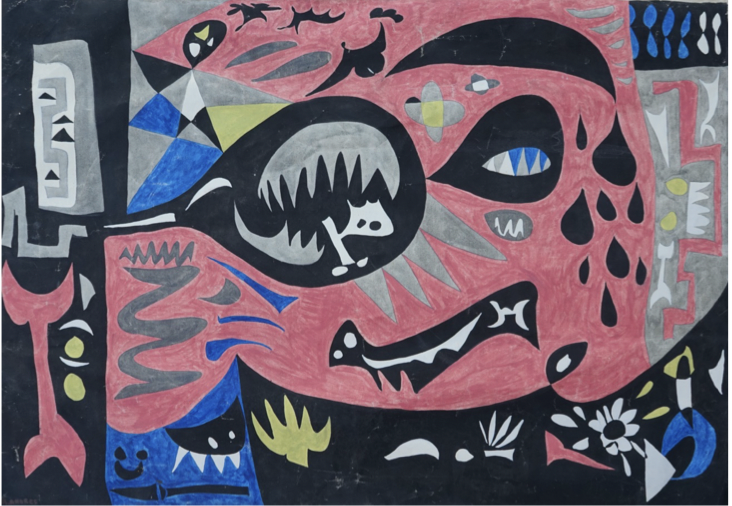Untitled
c. 1950
Oil on canvas
25 1/2 x 33 3/4 in. (64.8 x 85.9 cm)
Collection of the Akron Art Museum
The Mary S. and Louis S. Myers Endowment Fund for Painting and Sculpture
2022.6
More Information
Richard Andres created this untitled painting circa 1950, around the time that he completed his BFA studies at the Cleveland School of Art (now the Cleveland Institute of Art). At this early point, he had not yet settled into the heavier and more solid compositions that characterize his later career and was instead experimenting with a surrealist-influenced style of biomorphic abstraction, featuring shapes that look like mouths, bones, fish, plants, and other natural forms. In this approach Andres may have been influenced by European painters like Joan Miró, and he was also in step chronologically with many of the Abstract Expressionist painters in New York (including Adolph Gottlieb, Barnett Newman, and Mark Rothko) who worked in biomorphic abstraction through the 1940s and began developing more personally idiosyncratic styles late in that decade. These other artists employed abstraction to plumb the depths of the unconscious (their impartially formed, comingling shapes suggest the experiences of dreams) and to relate their art to a prehistoric essence of humanity (their shapes often resemble ancient pictographs), and this sensibility seems to fit Andres’s untitled painting as well. This early moment of experimentation and change is perhaps the most exciting and unpredictable portion of Andres’s career, as he eagerly took inspiration from his teachers and his contemporaries, synthesizing it into work of his own. This creative energy seems embodied in the untitled painting under consideration here, with its dense and flowing array of forms. As in so much of his later work, black paint is crucial to Andres’s composition, but it is used less heavily and more boldly in this case. The black gives an inky liquidity to rounded shapes that seem poised to drip or ooze across the canvas, yielding a sense of movement. The painting central jagged forms resembling teeth or spines likewise suggest movement in the possibility of a chomp or a jab, and this adds a subtle but sharp hint of menace to the picture’s surrealist air of grasping, mysterious meaning.

